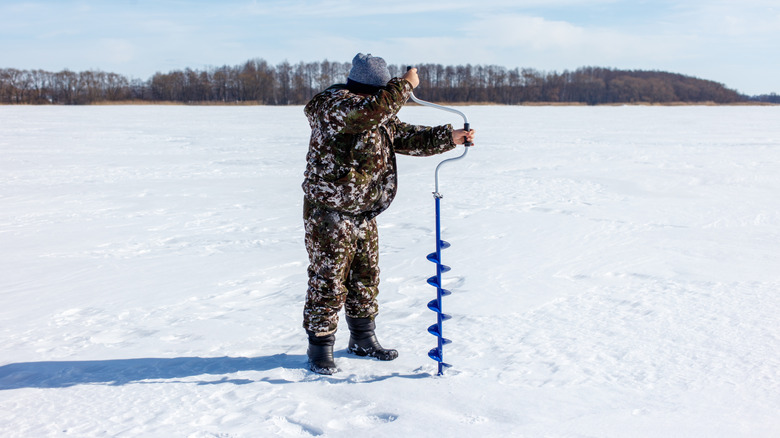How Do You Know When That Frozen Adirondack Lake Is Safe To Walk On?
As one of New York's best mountain ranges, the awe-inspiring Adirondacks are known for their pristine natural landscapes. During the snowy season, it transforms into a wonderland, perfect for a romantic winter getaway for cold weather lovers. Before you step off the hiking trail and onto a frozen lake, you need to make sure it's safe to do so. As aesthetic as it might look, walking across the ice when it isn't solid enough can have devastating, even deadly consequences.
While it's hard to be completely certain whether or not ice is stable, there are some ways to make walking across a frozen lake safer. The standard rule is that if the ice is less than 4 inches thick, you should never walk on it. The color can also provide some clues about how strong the ice is and if it might be able to hold your weight.
While Ausable Chasm (the Grand Canyon of the Adirondacks) is breathtaking in the winter, you never want to step onto an icy river. While it might look solid, it's a lot harder to determine how thick the ice is on moving water than a lake or pond. If you try walking on the ice in the Adirondacks, you should avoid inlets, outlets, rivers, and streams.
What color is the ice?
Looking out at a crystal clear frozen lake might make you long to walk out onto its surface — but is that safe? The appearance of the ice may be able to give you a hint. If the ice is clear, that's a good sign. Ice that you can't see through is usually weaker, and the color may give you some good clues, as well.
If you're hoping to walk on the lake, look for black or blue ice, which signals that the lake's water itself has frozen. Cloudy white and gray ice is typically formed by snow falling on the surface and freezing, and it's not stable enough to walk on (at least on its own). You can theoretically walk on a lake that has some opaque ice on top, but only if there's thick, clear blue or black ice below it. When figuring out how stable the frozen body of water is, you need to know how thick the blue and black ice is. Don't include white and gray ice in your measurements.
How to figure out the thickness of the ice
You never want to walk on ice thinner than 4 inches, but it can be hard to guess how far down it goes when you're just admiring the surface of a frozen lake. One of the best ways to check if it's safe to walk on is to use an ice auger, a screw, or even a cordless drill to check exactly how far down it goes. Although there is definitely variation in any body of water, drilling down into the ice can give you a good idea of what you're actually dealing with below the surface.
No matter what tool you use to make your hole in the ice, the next step is simple: measure the ice. You can bring a tape measure and lower it down into the hole. If the depth of the clear blue or black ice is greater than 4 inches, it might be safe. If it's any less, you definitely shouldn't walk on it. For those planning to ride a snowmobile or vehicle out on the lake, this measurement will need to be significantly more — potentially over a foot thick, depending on the weight you want the ice to hold.


